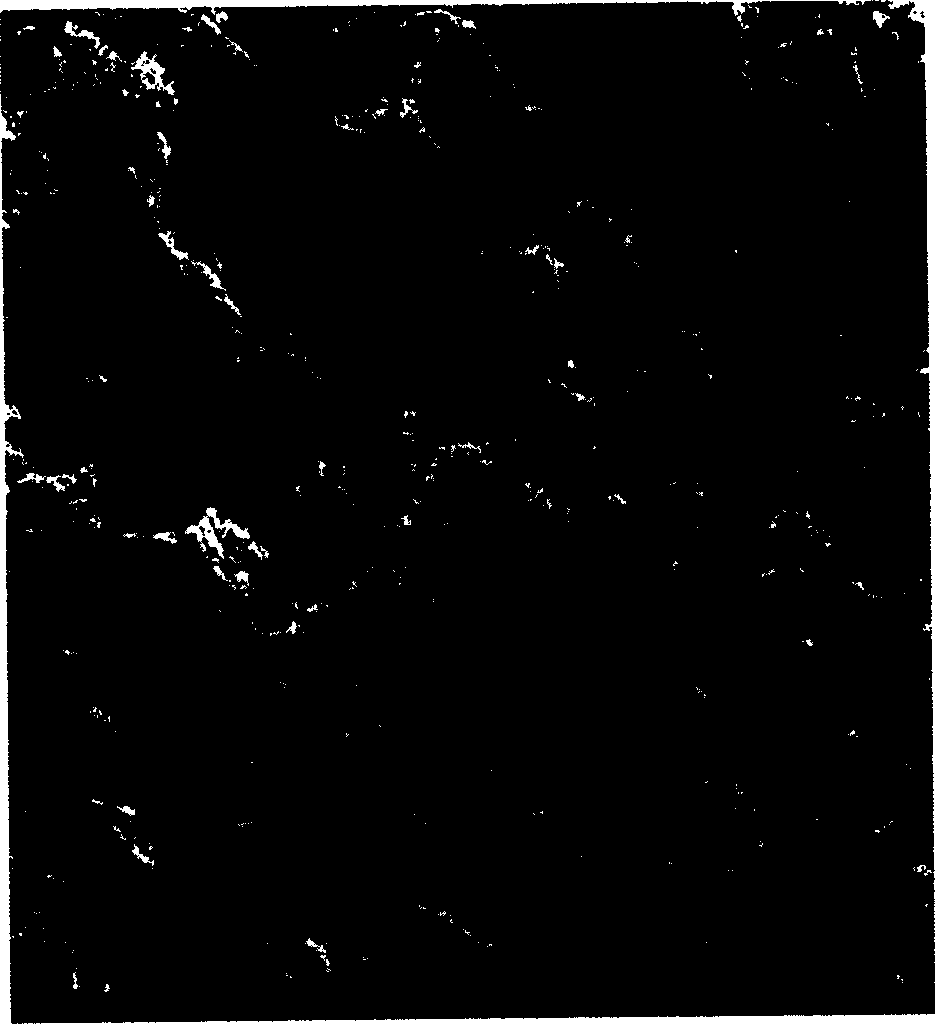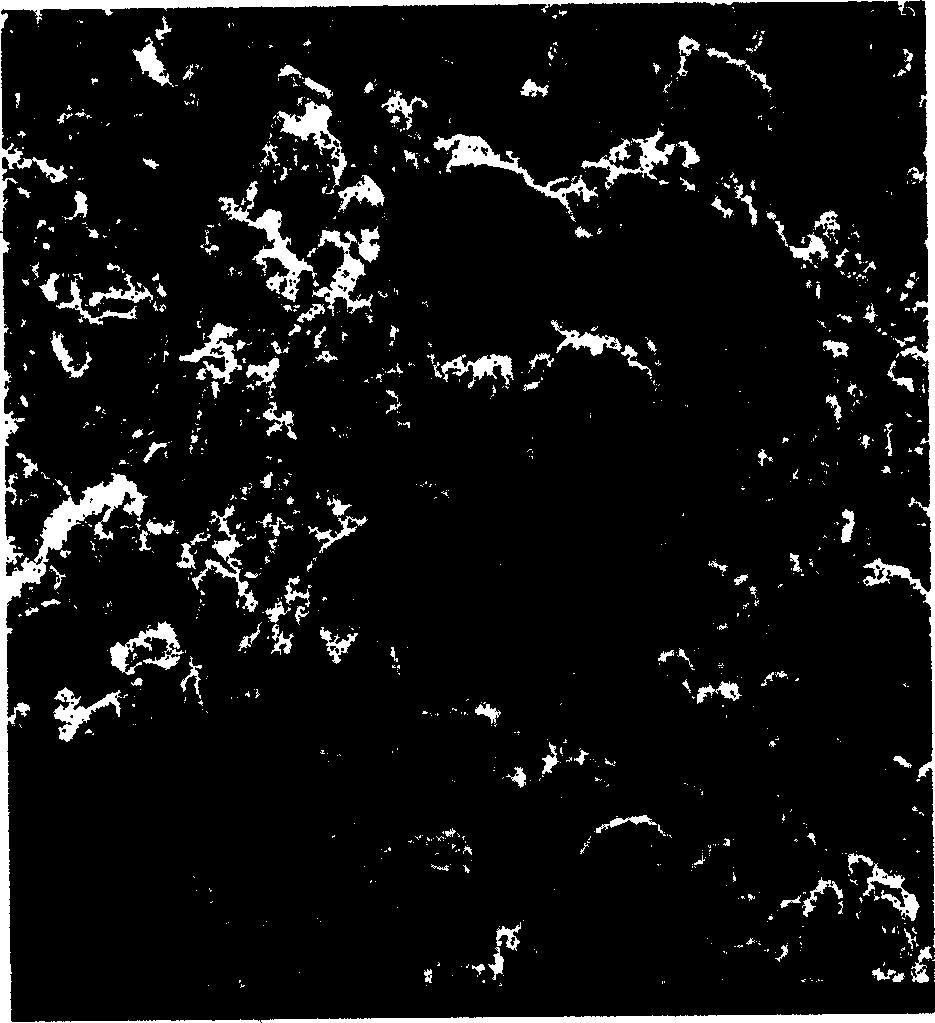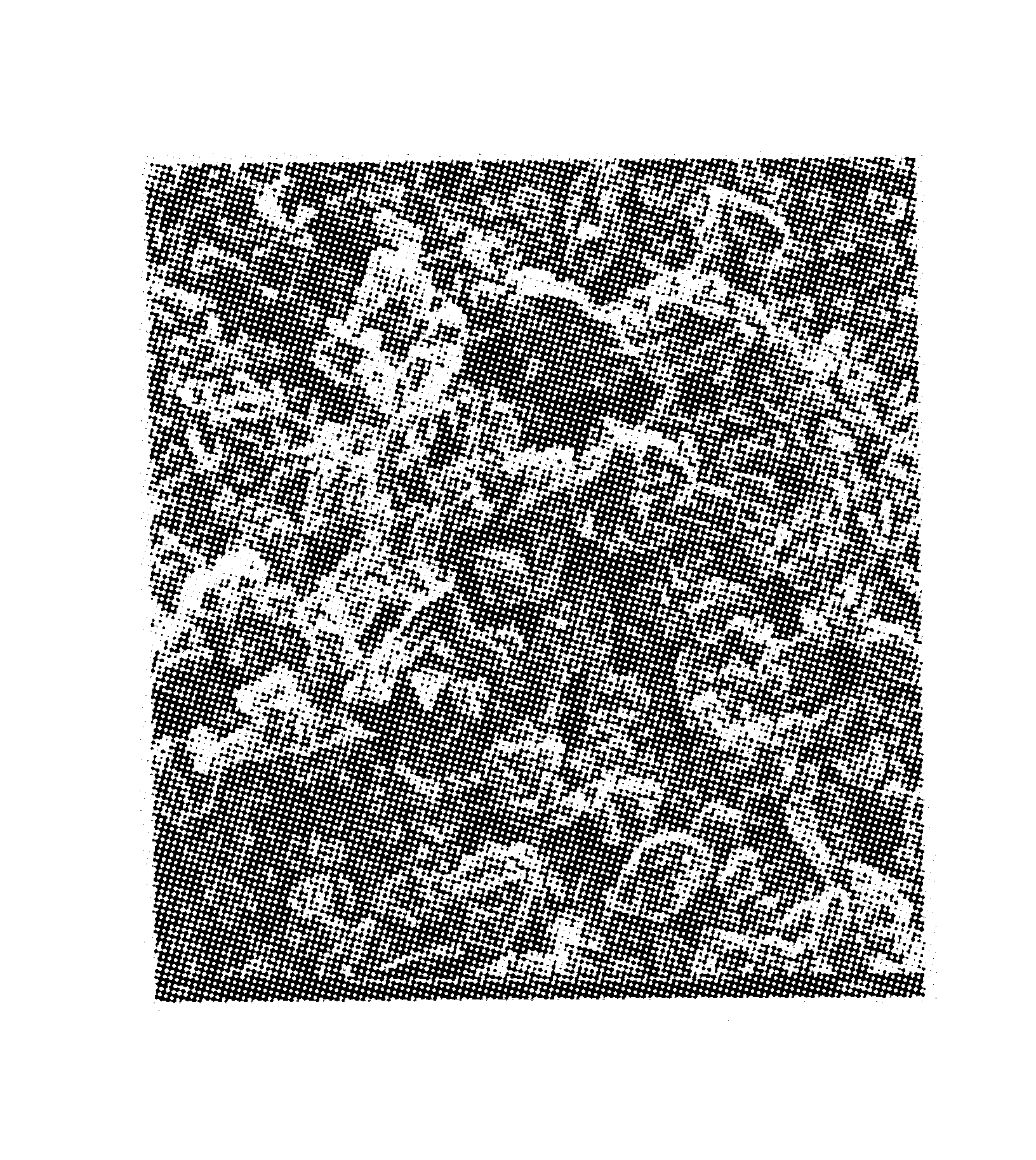Method for modifying surface of graphite particle
A graphite particle and surface modification technology, applied in chemical instruments and methods, inorganic pigment treatment, fibrous fillers, etc., can solve the problems of unfavorable large-scale production, small reversible capacity, cumbersome process steps, etc., to improve cycle performance and Reversible capacity, good cycle performance and safety performance, and the effect of improving safety performance
- Summary
- Abstract
- Description
- Claims
- Application Information
AI Technical Summary
Problems solved by technology
Method used
Image
Examples
Embodiment 1
[0030] Prepare a stainless steel autoclave with polytetrafluoroethylene as the liner, and a constant temperature oven with a tolerance temperature of at least 140°C. Put 5 grams of graphite powder (CZ-1) (provided by Lanzhou Carbon Co., Ltd.) into a polytetrafluoroethylene liner with a volume of about 48ml, add 23.54ml of deionized water, and stir with a glass rod to fully wet the graphite powder to form a suspension liquid. According to the volume ratio is H 2 SO 4 : HNO 3 :CH 3 COOH:H 2 Slowly add concentrated sulfuric acid (98%), concentrated nitric acid (67%), and glacial acetic acid in the ratio of O=1:1:1:3, stir well, cover the inner tank cover, then tighten the stainless steel outer cover, and put it in a constant temperature Oven, at a temperature of 95°C, continuously soak for 72 hours, and then naturally cool to room temperature. Filter, then soak the graphite particles with deionized water for 4 hours, filter and wash again, and when the filtrate pH~7, dry th...
Embodiment 2
[0033] According to the same steps and the same proportion of Example 1 to modify the morphology of graphite particles, the graphite powder (1 μm-10 μm) purchased from Qingdao Huatai Company was used instead, and the reaction temperature was adjusted from 95 ° C to 120 ° C. From the scanning electron microscope photos, graphite The sharp parts on the surface of the particles are dissolved, which is similar to the morphology of the modified graphite particles obtained in Example 1.
Embodiment 3
[0035] In order to evaluate the electrochemical performance of graphite particles after morphology modification, the modified graphite was made into a half-cell. Its production process is as follows:
[0036]According to the mass ratio of graphite: polyvinylidene fluoride = 9: 1, the shape-modified graphite obtained in Example 1 is mixed, and an appropriate amount of NMP (N-methyl-2-pyrrolidone) is added, mixed thoroughly, and then uniformly Coated on copper foil, dried at 70°C for two hours, removed NMP from the copper foil, pressed the negative electrode film to 70% of the original thickness with a roller press, and punched it into an electrode film with a diameter of 31.75mm; follow the same process , the unmodified graphite (CZ-1) provided by Lanzhou Carbon Company was prepared into an electrode film, waiting to be assembled into a battery.
[0037] performance
PUM
| Property | Measurement | Unit |
|---|---|---|
| diameter | aaaaa | aaaaa |
Abstract
Description
Claims
Application Information
 Login to View More
Login to View More - R&D
- Intellectual Property
- Life Sciences
- Materials
- Tech Scout
- Unparalleled Data Quality
- Higher Quality Content
- 60% Fewer Hallucinations
Browse by: Latest US Patents, China's latest patents, Technical Efficacy Thesaurus, Application Domain, Technology Topic, Popular Technical Reports.
© 2025 PatSnap. All rights reserved.Legal|Privacy policy|Modern Slavery Act Transparency Statement|Sitemap|About US| Contact US: help@patsnap.com



